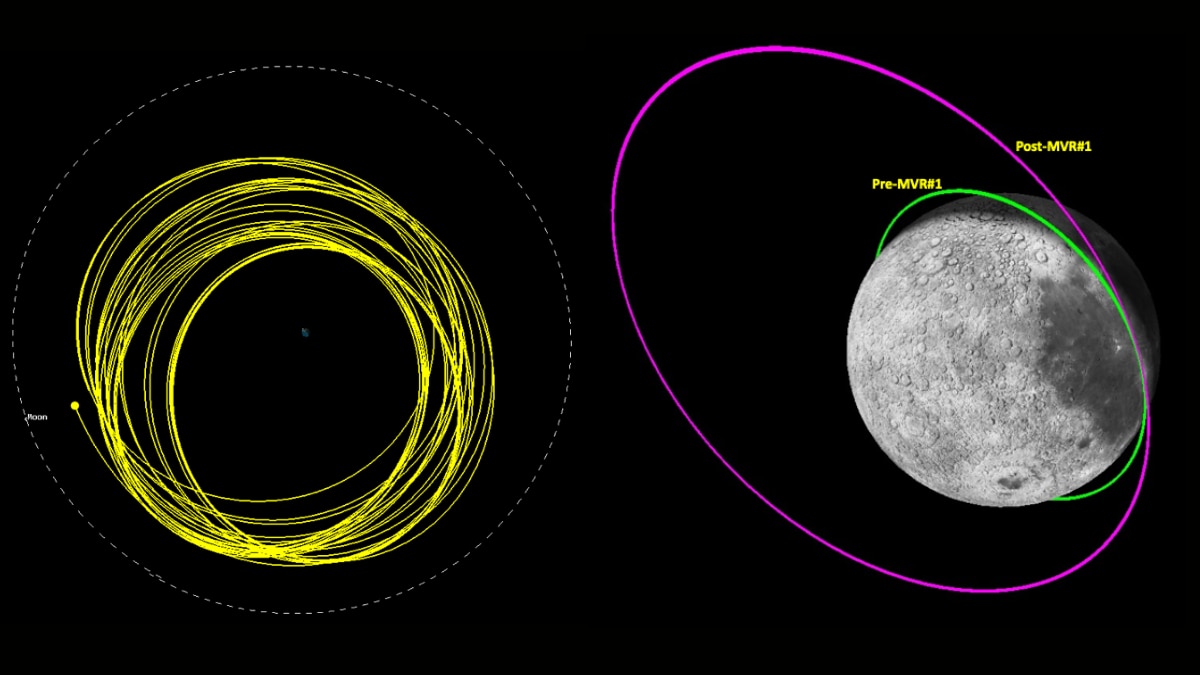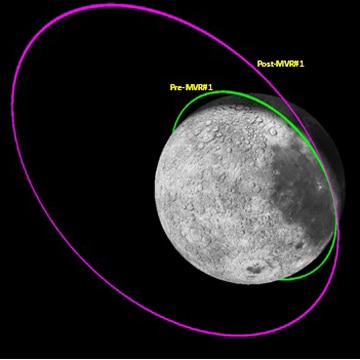Why is the Chandrayaan-3 Propulsion Module being moved back to Earth's orbit?

Chandrayaan-3 was launched on July 14 and created history after Vikram Lander landed on the Moon on August 23. (Photo Credits: ISRO)
The Indian Space Research Organisation (ISRO) has confirmed the relocation of Chandrayaan-3's Propulsion Module (PM) from its lunar orbit to an Earth orbit, describing this maneuver as a unique experiment.
Chandrayaan-3's primary objective was to demonstrate a soft landing near the lunar south polar region and conduct experiments utilising the instruments on both the 'Vikram' lander and the 'Pragyan' rover.
Chandrayaan-3 Mission:
— ISRO (@isro) December 5, 2023
Ch-3's Propulsion Module (PM) takes a successful detour!
In another unique experiment, the PM is brought from Lunar orbit to Earth’s orbit.
An orbit-raising maneuver and a Trans-Earth injection maneuver placed PM in an Earth-bound orbit.… pic.twitter.com/qGNBhXrwff
Why
-
ISRO engineers carefully orchestrated the return of the Propulsion Module (PM) to an Earth orbit, aiming to sustain Earth observations employing the SHAPE payload.
-
Rigorous planning ensured the maneuver avoided any potential collisions with the Moon and prevented interference with Earth's geostationary belt.
-
The decision to utilise the remaining fuel in the Propulsion Module (PM) aimed to collect additional data for upcoming lunar missions, showcasing operational strategies applicable for a sample return mission.
The mission
Launched on July 14, 2023, aboard the LVM3-M4 vehicle from the Satish Dhawan Space Centre (SDSC-SHAR), the Chandrayaan-3 spacecraft accomplished a remarkable milestone as the Vikram lander made a successful touchdown on the Moon on August 23.
Chandrayaan-3 Mission:
— ISRO (@isro) August 23, 2023
'India🇮🇳,
I reached my destination
and you too!'
: Chandrayaan-3
Chandrayaan-3 has successfully
soft-landed on the moon 🌖!.
Congratulations, India🇮🇳!#Chandrayaan_3#Ch3
After the historic landing, the Pragyan rover was deployed, and the scientific instruments onboard both the lander and rover functioned continuously for one lunar day, adhering to the mission's predetermined lifespan.
-
In a recent statement, ISRO confirmed the successful achievement of all mission objectives for Chandrayaan-3.
-
The Propulsion Module (PM) played a pivotal role in transporting the lander module from the Geostationary Transfer Orbit (GTO) to the final lunar polar circular orbit and facilitating the separation of the lander.
-
Following the separation, the activation of the Spectro-polarimetry of HAbitable Planet Earth (SHAPE) payload within the PM aligned with the initial plan to operate it for approximately three months during the module's mission lifespan.
-
Nevertheless, precise orbit injection by LVM3 and well-executed earth or lunar burn maneuvers resulted in over 100 kg of fuel remaining available in the PM after operating for over a month in lunar orbit.
To sustain the utilisation of the SHAPE payload for Earth observations, ISRO strategised to relocate the PM to an appropriate Earth orbit.
This plan was devised to prevent any potential collision of the PM with the Moon or interference with Earth's Geosynchronous Equatorial Orbit (GEO) belt, which extends at an altitude of 36,000 km and encompasses orbits below that level.
Previous maneuvers
Taking into consideration the available fuel and the safety of other spacecraft in Geosynchronous Earth Orbit (GEO), ISRO planned for the PM's return to Earth in October 2023.
-
The initial adjustment on October 9, 2023, elevated the orbit's highest point to 5,112 km from 150 km, thereby elongating the orbit period.
-
Subsequently, accounting for the remaining fuel, they revised the plan, aiming for an Earth orbit spanning 1.8 lakh x 3.8 lakh km.
-
The Chandrayaan-3 PM underwent a sequence of maneuvers to facilitate its planned return to Earth. On October 13, 2023, the Trans-Earth Injection (TEI) maneuver was executed.
-
Following TEI, the PM completed four fly-bys around the Moon before departing its sphere of influence on November 10.
-
As of now, the PM orbits Earth, having passed its initial perigee on November 22, reaching an altitude of 1.54 lakh km.
-
This orbit boasts a nearly 13-day period and a 27-degree inclination, with varying perigee and apogee altitudes along its trajectory. The predicted minimum perigee altitude stands at 1.15 lakh km.
ISRO assures that based on current orbit predictions, there is no risk of close approach to operational Earth satellites.

As per the plan, the SHAPE payload remains active whenever Earth is within its field of view. A specialised operation of the SHAPE payload took place on October 28, 2023, coinciding with a solar eclipse, and additional operations are anticipated in the future.
The UR Rao Satellite Centre/ISRO's flight dynamics team created an analysis tool specifically for this operation, which was validated through maneuvers conducted for the Chandrayaan-3 PM.

